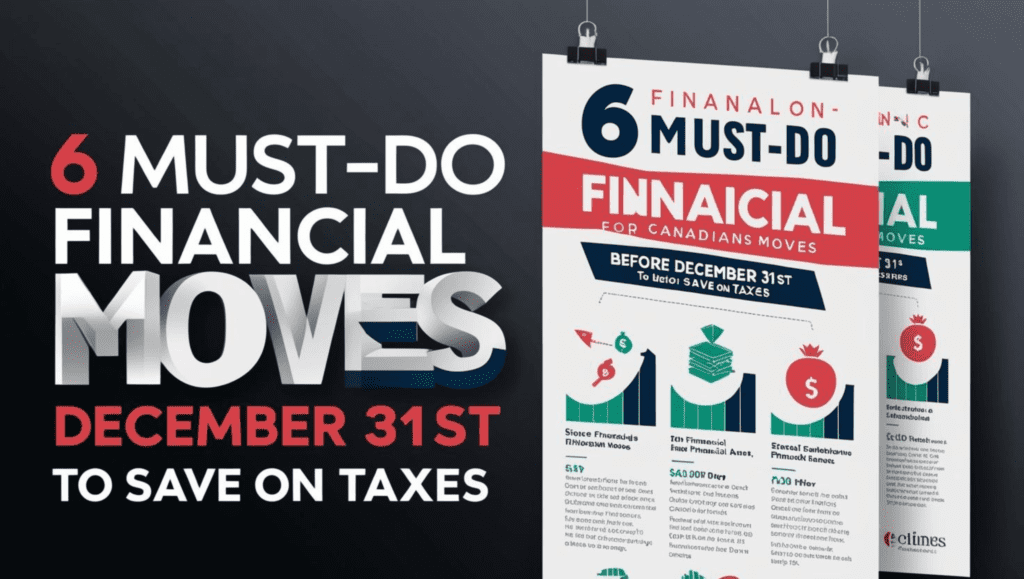End-of-Year Financial Checklist for Canadians: Maximize Your Tax Savings Before December 31st
As the year winds down, it’s time to review essential financial tasks that can significantly impact your taxes and savings. These strategies, tailored for Canadian taxpayers, ensure you don’t leave money on the table. Whether you’re a seasoned investor or new to managing finances, here’s a must-do list before the clock strikes midnight on December 31st.
1. First Home Savings Account (FHSA)
Why It’s Important
The FHSA combines the benefits of a Tax-Free Savings Account (TFSA) and a Registered Retirement Savings Plan (RRSP). Contributions are tax-deductible, and withdrawals for home purchases are tax-free.
Key Tips:
- Open your FHSA before December 31st, even if you can’t contribute right away.
- Contribution room only starts accumulating after opening an account. Delay, and you lose out on $8,000 of contribution room for the current year.
- Maximize your room for 2025 by opening an FHSA now, giving you $16,000 in contribution space starting January 1st.
- Remember, unused room is limited to $8,000 annually. Plan consistent yearly contributions to fully benefit.
For detailed rules, check out this FHSA guide and consider using platforms like Questrade for opening an account.
2. Registered Education Savings Plan (RESP)
Maximize Government Grants
RESPs are a valuable tool for saving for your child’s post-secondary education. The government matches 20% of your contributions, up to $500 annually per child.
Steps to Follow:
- Contribute $2,500 per child before December 31st to earn the full $500 grant.
- Missed a year? You can catch up by contributing $5,000 next year to receive up to $1,000 in grants, but this strategy is a backup, not a replacement for yearly contributions.
For more insights, explore this RESP explainer.
3. Tax-Free Savings Account (TFSA)
Optimize Withdrawals Before Year-End
While there’s no deadline for TFSA contributions, withdrawals must be timed carefully.
Why Timing Matters:
- Withdraw by December 31st to regain the same contribution room on January 1st.
- Delay until January, and you’ll need to wait until the next year to regain that room.
Example:
- Withdraw $2,000 in December, and on January 1st, regain that room plus the new annual limit ($7,000 for 2025).
- Withdraw in January, and that room won’t be available until January 2026.
4. Registered Retirement Savings Plan (RRSP)
Leverage Flexible Deadlines
RRSPs have a unique contribution deadline: March 3rd, 2025, for the 2024 tax year. This gives you extra time to strategize.
Pro Tips:
- Contribute now if you want to reduce your taxable income for 2024.
- Consider carrying forward your RRSP deduction if you anticipate being in a higher tax bracket next year for a larger refund.
Watch this RRSP guide for in-depth advice.
5. Brokerage Platforms for Investments
Whether you’re investing in TFSA, RRSP, or other accounts, choosing the right brokerage platform can save you money.
Recommended Platforms:
- Questrade and Wealthsimple are popular for their ease of use and competitive fees.
- Moomoo: A newcomer with low fees, especially for U.S. stock investments. Get a $300 bonus with a $5,000 deposit or $500 for $10,000.
6. Year-End Tax Strategies
The end of the year is a prime time for tax planning.
Essential Tips:
- Tax Loss Harvesting: Sell underperforming investments to offset gains.
- Superficial Loss Rule: Avoid repurchasing the same investment within 30 days to ensure losses are deductible.
- Account Transfers: Strategize shifting funds between tax-sheltered accounts.
Final Thoughts
Don’t wait until January to take action—seize the opportunity now to maximize your savings and minimize your taxes. From opening an FHSA to contributing to RESP and optimizing TFSA withdrawals, these steps can make a significant difference.
Pro Tip: Contributions and withdrawals may take a few business days to process. Plan ahead to ensure everything is completed before December 31st.

